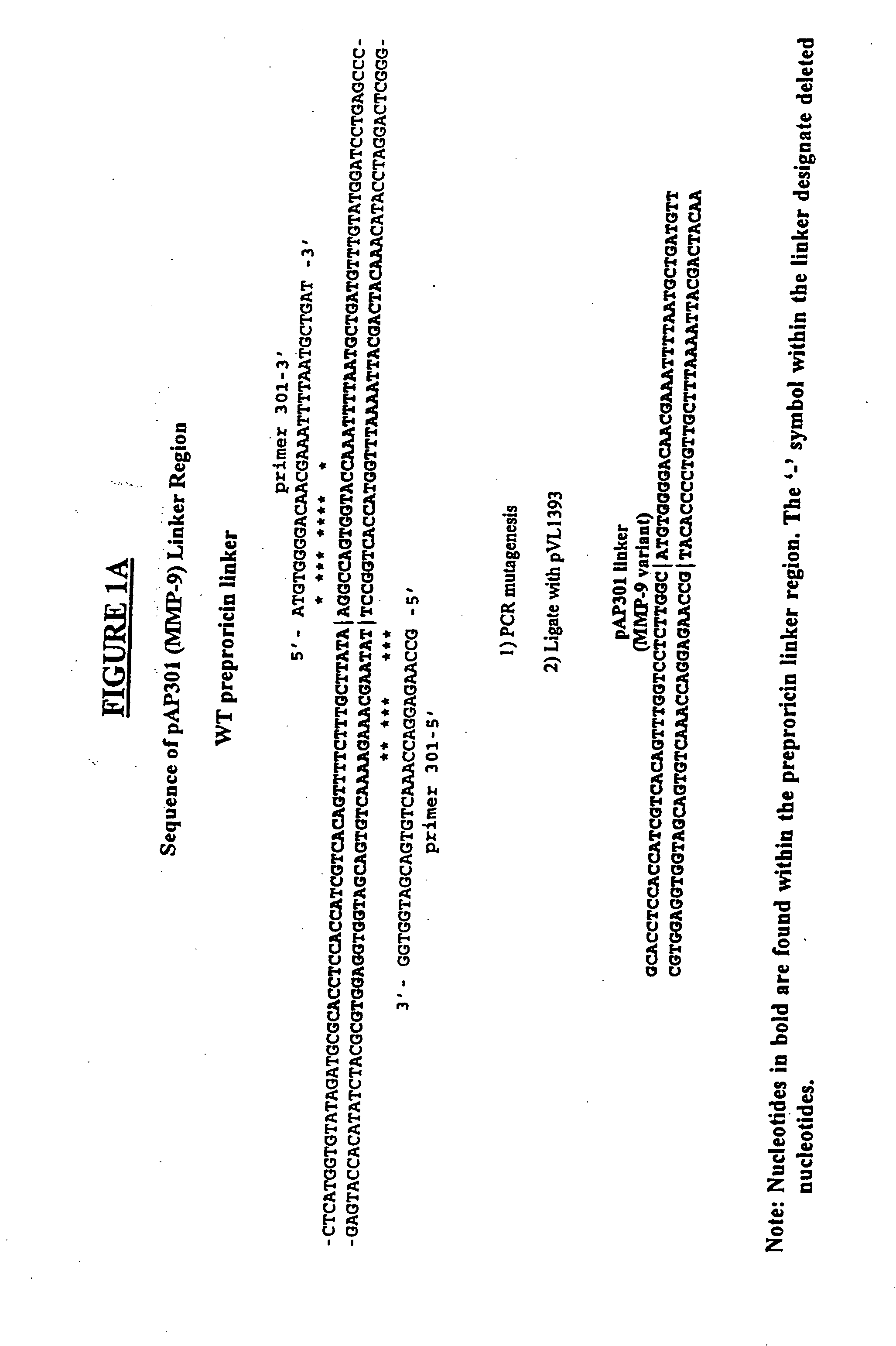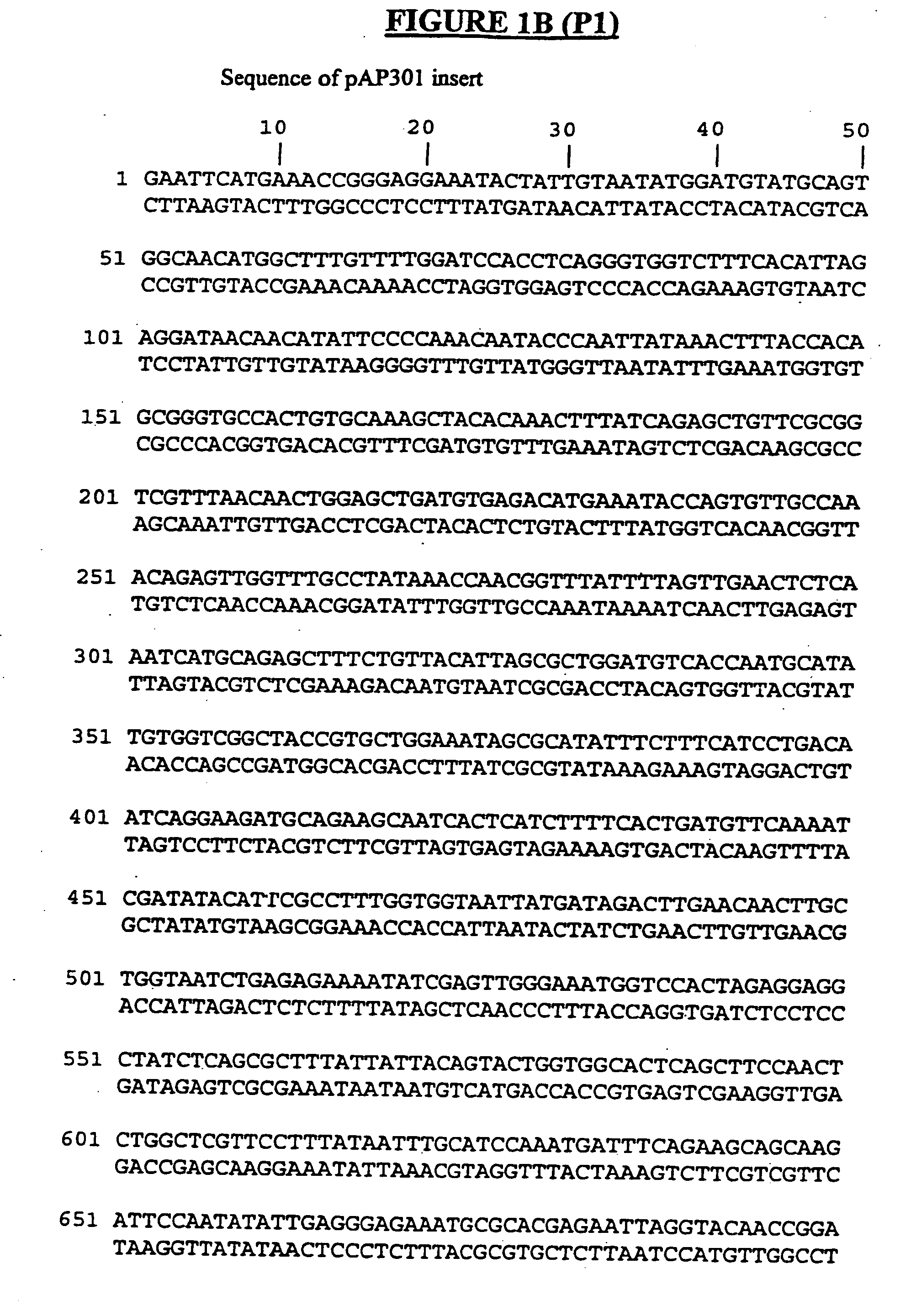Ricin-like toxins for treatment of cancer
a technology of ricin-like toxins and cancer, applied in the field of proteins, can solve the problems of limiting the usefulness of ricin-like toxins as cancer treatment and infectious diseases, unable to meet the needs of specificity, and unable to prepare suitable specific cell binding components,
- Summary
- Abstract
- Description
- Claims
- Application Information
AI Technical Summary
Benefits of technology
Problems solved by technology
Method used
Image
Examples
example 1
Cloning and Expression of Proricin Variants Activated by Disease Specific Proteases Isolation of Total RNA
[0159] The preproricin gene was cloned from new foliage of the castor bean plant. Total messenger RNA was isolated according to established procedures (Sambrook et al., Molecular Cloning: A Lab Manual (Cold Spring Harbour Press, Cold Spring Harbour, (1989)) and cDNA generated using reverse transcriptase.
cDNA Synthesis
[0160] Oligonucleotides, corresponding to the extreme 5′ and 3′ ends of the preproricin gene were synthesized and used to PCR amplify the gene. Using the cDNA sequence for preproricin (Lamb et al., Eur. J. Biochem., 145:266-270, 1985), several oligonucleotide primers were designed to flank the start and stop codons of the preproricin open reading frame. The oligonucleotides were synthesized using an Applied Biosystems Model 392 DNA / RNA Synthesizer. First strand cDNA synthesis was primed using the oligonucleotide Ricin1729C. Three micrograms of total RNA was use...
example 2
Harvesting and Affinity Column Purification of Pro-Ricin Variants
[0166] Protein samples were harvested three days post infection. The cells were removed by centrifuging the media at 8288 g for ten minutes using a GS3 (Sorvall) centrifuge rotor. The supernatant was further clarified by centrifuging at 25400 g using a SLA-1500 rotor (Sorvall) for 45 minutes. Protease inhibitor phenylmethylsulfonyl fluoride (Sigma) was slowly added to a final concentration of 1 mM. The samples were further prepared by adding α-lactose to a concentration of 20 mM (not including the previous lactose contained in the expression medium). The samples were concentrated to 700 mL using a Prep / Scale-TFF Cartridge (2.5 ft, 10K regenerated cellulose (Millipore)) and a Masterflex pump. The samples were then dialysed for 2 days in 1× Column Buffer (50 mM Tris, 100 mM NaCl, 0.02% NaN3, pH 7.5) using dialysis tubing (10 K MWCO, 32 mm flat width(Spectra / Por)). Subsequently, the samples were clarified by centrifugin...
example 3
In Vitro Protease Digestion of Proricin Variants:
[0181] Affinity-purified proricin variant is treated with individual disease-specific proteases to confirm specific cleavage in the linker region. Ricin-like toxin variants are eluted from the lactose-agarose matrix in protease digestion buffer (50 mM NaCl, 50 mM Na-acetate, pH 5.5, 1 mM dithiothreitol) containing 100 mM lactose. Proricin substrate is then incubated at 37° C. for 60 minutes with a disease-specific protease. The cleavage products consisting ricin A and B chains are identified using SDS / PAGE (Sambrook et al., Molecular Cloning: a Laboratory Manual, 2nd. ed., Cold Spring Harbor Press, 1989), followed by Western blot analysis using anti-ricin antibodies (Sigma). FIG. 19 shows the cleavage products of an MMP-9 digestion of PAP323, PAP324 and PAP325.
[0182] Matrix metalloproteinases may be prepared substantially as described by Lark, M. W. et al. (Proceedings of the 4th International Conference of the Inflammation Researc...
PUM
| Property | Measurement | Unit |
|---|---|---|
| temperature | aaaaa | aaaaa |
| temperature | aaaaa | aaaaa |
| flat width | aaaaa | aaaaa |
Abstract
Description
Claims
Application Information
 Login to View More
Login to View More - R&D
- Intellectual Property
- Life Sciences
- Materials
- Tech Scout
- Unparalleled Data Quality
- Higher Quality Content
- 60% Fewer Hallucinations
Browse by: Latest US Patents, China's latest patents, Technical Efficacy Thesaurus, Application Domain, Technology Topic, Popular Technical Reports.
© 2025 PatSnap. All rights reserved.Legal|Privacy policy|Modern Slavery Act Transparency Statement|Sitemap|About US| Contact US: help@patsnap.com



